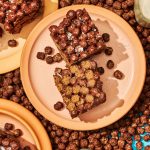Hydrangeas remain a fan-favorite among gardeners for one simple reason: gorgeous, long-lasting blooms. It’s easy to fall in love with hydrangeas at the garden center, where those showy flowerheads scream for attention. From vivid blues, pinks, and purples to softer pastel tones, creamy white, and even green hues, there is a hydrangea for every garden style. At home in the garden, proper fertilization is necessary to maintain these vibrant colors, encourage abundant flower production, and maintain healthy foliage. Unlock the secret to lush hydrangeas through proper fertilizer selection and timing.
Understanding Hydrangea Fertilization
Hydrangeas respond to fertilization with increased vigor which can make plants more resilient to pests while supporting larger blooms. However, fertilizer type and timing of applications are critical to producing the desired response. Fertilizing too much or at the wrong time can encourage leaf production over blooms. And the flower color of some hydrangea species is sensitive to soil pH and available nutrients.
As a general rule, hydrangeas respond well to slow-release, granular fertilizers formulated for woody plants. As their name suggests, these fertilizers slowly release nutrients over time, making them available for a longer period than liquid fertilizers. Slow-release fertilizers can be organic or inorganic. Organic fertilizers are derived from plant or animal products such as manure, bone and blood meals, composted plant material, or fish meal. These naturally release nutrients slowly as the organic matter breaks down in the soil. Rose-tone is an organic fertilizer that works well on most
hydrangeas.
Slow-release fertilizers for woody plants typically have an NPK ratio of 3-1-2 or 3-1-1 (e.g. 24-8-16 or 15-5-5). This ratio describes the percentages of nitrogen (N), phosphorus (P), and potassium (K) in the fertilizer. This NPK ratio is preferred to balanced fertilizers, which have a 10-10-10 ratio, because some hydrangeas are sensitive to too much phosphorous, particularly varieties that have blue or purple blooms including big leaf hydrangeas (Hydrangea macrophylla) and mountain hydrangeas (H. serrata).
Hydrangeas utilize aluminum available in the soil to produce blue and purple tones. The more aluminum these plants can take up from the soil, the more intense their flower color. In the absence of aluminum, flower color becomes pink. When phosphorous levels in the soil are too high, the plant cannot absorb the necessary aluminum. Soil pH also plays a part. Plants are better able to take up aluminum in acidic soil, ideally with a pH between 5.0 and 5.5.
For all types of hydrangea, using fertilizers low in phosphorous, as described above, is sufficient in most cases to produce the desired flower color. However, varieties with blue and purple blooms sometimes require additional soil amendments to adjust soil pH. Conduct a soil test to identify the existing conditions. Test results will indicate how much powdered or pelletized sulfur is required to reach the desired pH. Soil tests will also determine if sufficient aluminum is available in the soil.
When To Fertilize Hydrangeas
Most hydrangeas require only a single application of slow-release fertilizer in early spring as plants begin to leaf out. For oakleaf (H. quercifolia), panicle (H. paniculata), smooth (H. arborescens) and climbing hydrangeas (H. anomala), this feeding provides plants with all the nutrients they need to develop flowers and foliage for the season. Do not fertilize new hydrangeas at planting time because they typically already have slow-release fertilizer incorporated in the potting soil. Begin fertilizing newly installed plants the following spring.
Blue and purple varieties of big leaf and mountain hydrangeas can benefit from the application of aluminum sulfate during bud development in May to boost flower color. This treatment is helpful if soil tests indicate insufficient amounts of aluminum in the soil. It provides a quick fix through the application of a fast-acting liquid soil drench around the plant. Applications of aluminum sulfate should not replace efforts to amend soil pH, which produces long lasting results. With regular spring fertilization, this application should become unnecessary over time.
Many gardeners like to make a second application of slow-release woody plant fertilizer to big leaf and mountain hydrangeas in late June or early July. These varieties produce flower buds during the summer that will open next season . A mid-summer fertilizer application helps support flower bud development.
Reblooming hydrangea varieties such as Dear Dolores® and Heart Throb® also benefit from this mid-summer application to support a second flush of blooms. Be sure to stop fertilizing hydrangeas by late July. Fertilizing woody plants late in the season can encourage a flush of new growth that does not have time to harden off before freezing temperatures arrive, making it susceptible to winter damage.
When it comes to fertilizing potted hydrangeas, it is important to make a distinction between newly purchased plants and those that have been overwintered in containers. New plants typically have plenty of slow-release fertilizer incorporated into their potting medium to last through the growing season. For hydrangeas that have overwintered in containers, feed as you would for plants in the ground, with an early spring application of slow-release fertilizer.
How To Fertilize Hydrangeas
Fertilizing hydrangeas couldn’t be easier. Measure out the suggested amount based on the label rates and sprinkle it evenly on the soil surface around the perimeter of the plant, just beneath and outside the extent of the branches. This is called the drip line. Extend applications three to four inches beyond the drip line for every foot of plant height. For example, fertilize a three-foot hydrangea 9 to 12 inches beyond the drip line. Keep the fertilizer off foliage and branches to avoid burning plant tissues.
Soil moisture hastens the movement of nutrients through the soil and keeps materials in place. Make sure the soil is slightly moist before applying fertilizer. Avoid applying fertilizer to dry soils as the nutrients can burn roots. A good practice is to water the planting area the day before you intend to fertilize. Water lightly again after application. Adequate soil moisture is necessary to dissolve the nutrients and carry them to plant roots.
The best way to ensure hydrangea plants receive the required nutrients is to conduct a soil test and adjust fertilization rates based on the results. Your local county extension office has the tools and you need to collect a soil sample and will submit the sample for analysis. The results will indicate soil pH, identify any nutrient deficiencies, and provide recommendations for fertilizer applications and soil amendments, as needed.
Gardeners can also apply a thin layer of compost around plants in fall or early spring to build organic matter in the soil. This improves the soil’s capacity to hold water and nutrients and is a great way to build healthy soil. Compost provides the primary nutrients plants need—nitrogen, phosphorous, and potassium—as well as important micronutrients.
Common Fertilization Mistakes And Solutions
When it comes to fertilizing hydrangeas, it is best not to go overboard. Plants do not always require fertilizer additions, as many nutrients are readily available in the soil (which is why soil testing is so important). In fact, too much of certain nutrients can lead to poor flowering. Excess nitrogen encourages lush foliage growth and stem development at the expense of flowers. And we’ve already discussed how too much phosphorous can impact flower color. Of course, soil can also be deficient in important nutrients. Yellowing foliage in the center of the plant during flowering may indicate nitrogen deficiency. Applying a fast-acting liquid fertilizer can remedy the situation.
Iron deficiency can also be a problem for hydrangeas and occurs when the soil pH is too high. Iron deficiency causes young leaves to turn yellow between the veins, which remain bright green. Applications of iron chelate can be used as a short-term solution, but lowering soil pH through sulfur applications will be needed to address the problem long term.







